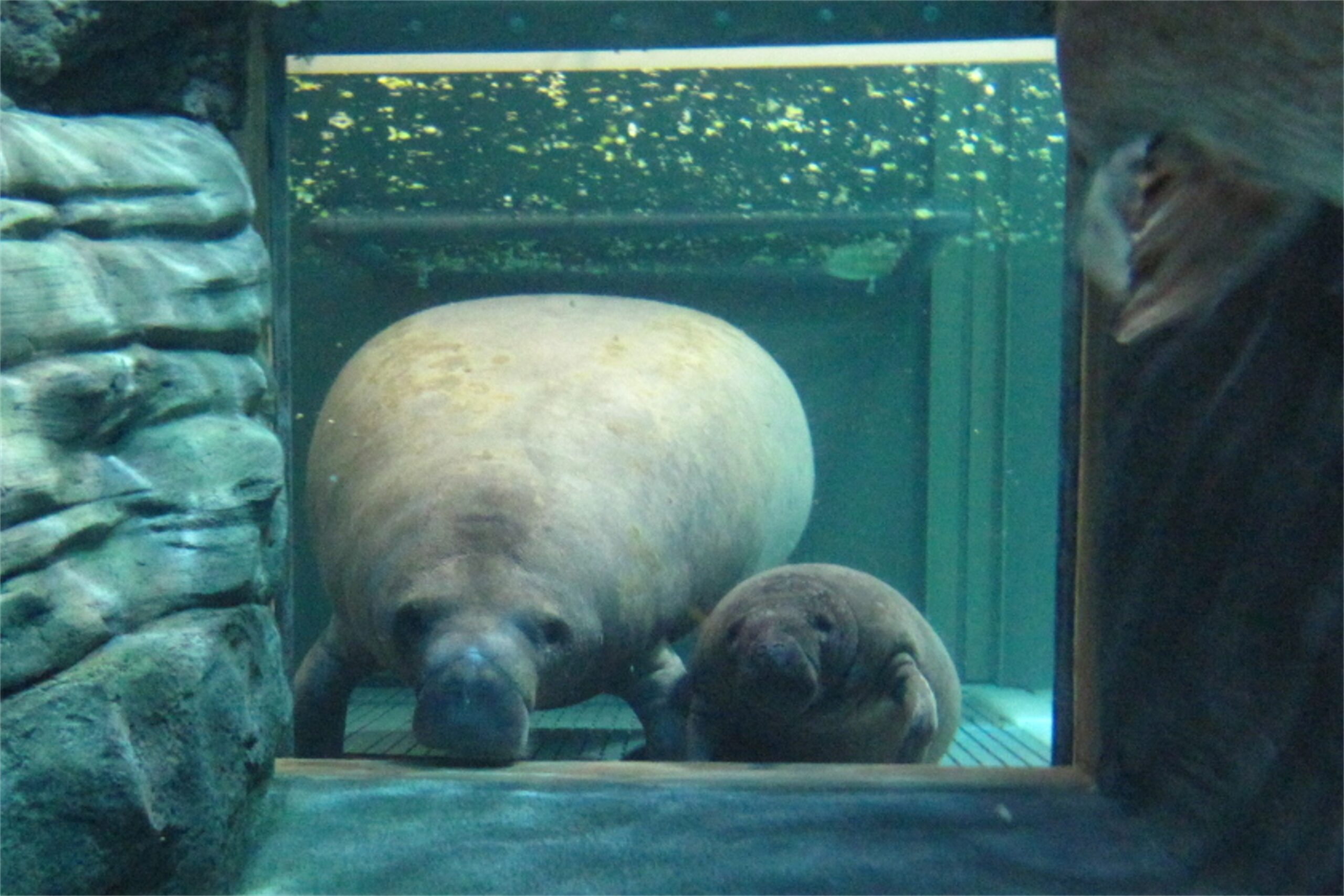Cincinnati Zoo’s Manatee Returned to the Wild
CINCINNATI – The Cincinnati Zoo & Botanical Garden’s 1,400 pound Florida manatee, Slip, was released into the clear, warm waters of Blue Spring State Park in Florida, Monday, February 15. Slip called the Cincinnati Zoo home from August 2005 to October 2009, before he was moved to Tampa’s Lowry Park Zoo. After four months of pre-release conditioning and evaluation, he returned to the wild with over 140 other manatees lingering in the Florida waters. (Video of the Release Available)
“The partners within the Manatee Rescue and Release Program were very happy with Slip’s successful release. He is a very healthy, large manatee that deserves the opportunity to be a wild animal” said Nicole Adimey, biologist with the U.S. Fish and Wildlife Service (USWFS). “Blue Spring is a very important aggregation area for manatees in the winter months. This spring will provide Slip with the opportunity to socialize with other manatee where consistent warm water is provided and also have a nearby food source. Additionally, Blue Spring offers the chance to monitor Slip on a regular basis thanks to efforts from the Park and Program staff, as well as other partners.”
The Cincinnati Zoo’s manatee program has been on hold for the last four months, while USFWS selects two more manatees to return to the Zoo’s Manatee Springs in April. During the anticipated hiatus, the Zoo has made the most of the opportunity by upgrading the manatee tank and mechanical systems in preparation for its new residents.
Last October, Slip alongside his roommate, Lil’ Joe, traveled 774 miles across the country to begin their journey of being released back into the wild. The manatees had to go through several months of pre-release conditioning to ensure they would be ready to return to life on the wild side. The process of pre-releasing involves preparing the animals for life outside of an exhibit. They reintroduce them to things like native aquatic plants that they will feed on in the Florida waters. Once they reach a healthy weight and pass a clean bill of health the doctors give them the okay to be set free. Lil’ Joe will eventually be released following this evaluation after the pre-release conditioning.
“Slip traveled well and was the center of attention at Blue Spring State Park,” said Lindsay Garrett, Cincinnati Zoo manatee keeper. “Several hundred people attended the tagging and release of the Zoo’s manatee. As he made his way down the spring’s run he received a roaring round of applause like that of a celebrity. Once released, he swam effortlessly through the clear blue waters of the State Park stopping only to socialize and interact with new friends he met along his way.”
Slip is equipped with a radio-transmitter tethered to the base of his tail. Scientists will use radio-transmitter signals to track movements and will obtain visual assessments at least twice a week. If the manatees are in good health after spending a year in the wild; having demonstrated an ability to forage for food, to associate with wild counterparts and to locate and successfully winter at warm water sites, then the release is considered successful.
The Cincinnati Zoo is one of only three facilities outside of Florida to participate in the USFWS’ Program. This Program began in 1973 with the mission of rescuing and rehabilitating distressed and injured Florida manatees. The fundamental purpose of the program is to release these rehabilitated manatees back into their wild habitat. Since the Cincinnati Zoo opened Manatee Springs in 1999, six manatees have now been released back into the wild.
Douglas was released into the Biscayne Bay near Miami, Florida in March 2004. Stoneman and Dundee were both released in Blue Springs, Florida in February 2006. Rodeo was released in April 2006 in Merritt Island, Florida and last February 2008, Hurricane was released in Blue Springs, Florida. And now the newest release, Slip.
Manatees can live up to 60 years of age. However, human activities throughout the years have accounted for about one-third of the known manatee deaths each year with watercraft collisions comprising the greatest human-related threat. Most adult manatees bear permanent scars from watercraft propeller strikes. In January of 2010, the Florida Fish and Wildlife Conservation Commission’s (FWC) Fish and Wildlife Research Institute (FWRI) reported a preliminary count of 5,076 manatees statewide. This aerial survey is the highest population count since surveys began in 1991. Unfortunately, the number of known mortalities continues to increase.

